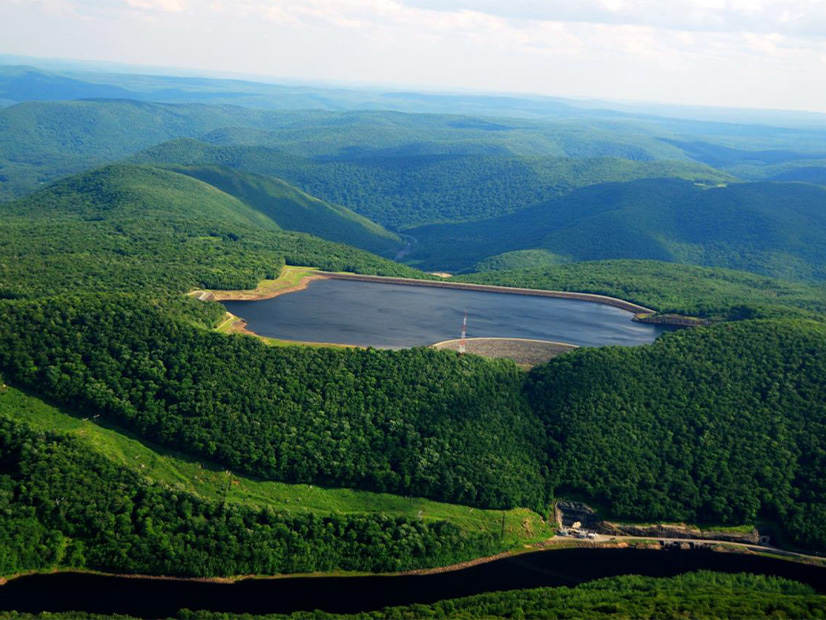FERC on Jan. 29 approved ISO-NE’s proposal to create a day-ahead ancillary services market and retire the current Forward Reserve Market (FRM), effective March 1, 2025 (ER24-275).
Dubbed the Day-Ahead Ancillary Services Initiative (DASI), ISO-NE and NEPOOL jointly filed the proposal at the end of October. The new market will procure operating reserves and fill any gaps between the amount of energy procured in the Day-Ahead Energy Market (DAEM) and the load forecast.
“We are pleased with the approval by FERC to create a day-ahead ancillary services market that, together with today’s Day-Ahead Energy Market, creates a single, jointly optimized day-ahead market,” ISO-NE told RTO Insider in a statement.
With climate change increasing weather variability as the resource mix shifts toward weather-dependent resources, DASI will “encourage reliable resource performance and prepare the system on a day-ahead time frame with the flexibility needed to manage these new operational uncertainties,” ISO-NE said.
ISO-NE and NEPOOL noted in their joint filing that the existing DAEM “only procures energy to meet bid-in demand, and if the load forecast exceeds the amount of cleared energy from physical suppliers, there remains what the ISO refers to as a day-ahead ‘energy gap.’”
The RTO currently relies on out-of-market solutions to identify resources to fill these energy gaps and provide operating reserves.
“This process results in both under-compensation to those resources identified to provide these capabilities during the operating day and no specific financial obligation or incentive for such resources to be prepared to perform in real time in accordance with the operating plan,” the proposal said.
The ancillary services market will be run in conjunction with the existing DAEM; it will procure 10-minute spinning and non-spinning reserves and 30-minute operating reserves. It will also include an “Energy Imbalance Reserve” product, which is intended to fill energy gaps between the DAEM and the load forecast.
“DASI will provide targeted compensation and clear financial obligations and incentives for the flexible resources on which the region currently relies, and on which it will increasingly rely as the region heads into the future,” the filing said.
DASI will replace ISO-NE’s FRM, which provides forward seasonal payments for resources to provide 10-minute non-spinning reserves and 30-minute operating reserves. ISO-NE has said the FRM is incompatible with the implementation of DASI.
ISO-NE noted that an analysis of projected DASI revenues based on a 2019-2021 study period found that the initiative would increase annual wholesale market costs by about $104 million, or about 1.1%. The study indicated that the ancillary market would generate “substantial revenues” for storage resources, ISO-NE added.
The joint filing was supported in comments by the New England States Committee on Electricity, the Electric Power Supply Association, the National Hydropower Association and the New England Power Generators Association.
Meanwhile, LS Power expressed concern that replacing the FRM with DASI could decrease revenue for flexible resources.
“The overall DASI proposal will cut revenues for flexible generation by as much as 94%,” the company wrote in its comments, adding that DASI could introduce “unreasonable and undercompensated risks” for peaking resources.
In response, ISO-NE disputed LS Power’s revenue calculations. The RTO noted that its impact assessment found that total net revenues for ancillary service suppliers would decrease by only about $5 million annually, adding that this assessment “may understate the revenues that will be earned by reserve-capable suppliers, compared to those currently earned through the FRM.”
The DASI filing requires ISO-NE’s Internal Market Monitor “to issue ad hoc reports on the competitiveness of any major market design change within one year of the effective date of operation, and on its performance within three years.”
The RTO recognized requests from stakeholders for longer-term reserves and wrote that it plans to kick off discussions on longer-term products for the real-time and day-ahead markets in 2025.
FERC found that DASI will “materially improve operating reserve resource readiness, efficiency and day-ahead price formation in ISO-NE without undue increases in wholesale market costs.”
The commission expressed skepticism of the concerns raised by LS Power, writing that the company “does not demonstrate that revenue levels under DASI, which result from market-determined clearing prices, will not be just and reasonable for the purpose of procuring and compensating operating reserves.”
In a concurring statement, Commissioner Allison Clements expressed strong support for the changes.
“The DASI reforms appear to be an important step forward for ISO New England’s ancillary services market and one reflecting the region’s evolving operational needs as its resource mix changes,” Clements wrote.
“For a proposal of this complexity to have near universal support in the record and unanimity in the stakeholder process is a testament to the hard work and productive collaboration of many in New England,” she added. “It is worth taking a moment to give credit where credit is due.”




